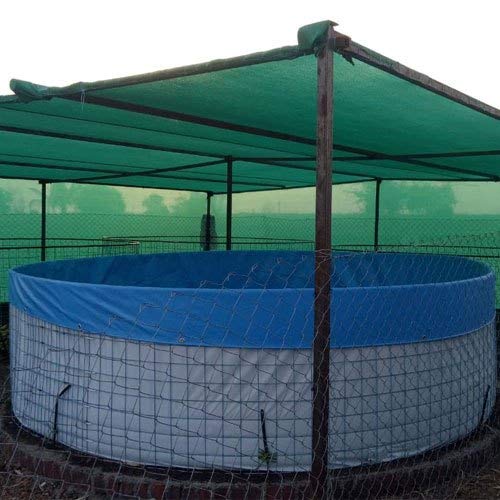What is Biofloc Technology
Biofloc technology (BFT) is considered the new “blue revolution” in aquaculture. Biofloc based farming system is a new technology for the promotion of intensive fish/ shrimp production in a limited area without significantly increasing the usage of the basic natural resources of water and land.
The constant increase in human population across the world, has resulted in a scarcity of resources like land and water. Wild fish stocks are also being depleted and in the not so distant future, the only source of fish will be farmed fish. Biofloc technology is the answer to all these challenges as a means of providing fish in a sustainable and profitable manner.
Biofloc technology is practiced globally and extensively in Asia. This technology involves treatment of the culture water with probiotics which
- Treat the water to the ammonia that is created as a waste product from biological processes that take place in fish and
- Generate high protein single cell microbial feed for the fish to consume.
It is a high density intensive aquaculture system where you can produce 25-50 kgs of fish per cubic meter of water. If you compare this with an unmanaged pond, on one end of the spectrum, that produces 1kg of fish per cubic meter of water and recirculating aquaculture system (RAS) on the other end of the spectrum where you can produce about the same or slightly more than biofloc. However, the cost of setting up and running a proper RAS system is significantly higher than biofloc. The cost of setting up and running a proper RAS is beyond the reach of many. The cost of setting up and running a biofloc system is relatively much lower.

Suitable culture species
A basic factor in designing a biofloc system is the species to be cultured. Biofloc systems work best with species that are able to derive some nutritional benefit from the direct consumption of floc. Biofloc systems are also most suitable for species that can tolerate high solids concentration in water and are generally tolerant of poor water quality. Species such as shrimp and tilapia have physiological adaptations that allow them to consume biofloc and digest microbial protein, thereby taking advantage of biofloc as a food resource. Nearly all biofloc systems are used to grow shrimp, tilapia, or carps.
Disadvantages / Challenges of Biofloc Technology
- BFT is a scientific technology and the understanding of scientific principles is key to the success of any biofloc farmer. Without proper training and initial guidance, one cannot succeed in this technology
- Power – Aeration is the heart of this system and this requires electricity. Uninterrupted electricity is crucial for the operation of a biofloc unit.
- Close Monitoring – Close and constant monitoring of water parameters is key to the success of this technology. Water is treated in-situ and therefore maintaining water parameters within the recommended limits is critical.